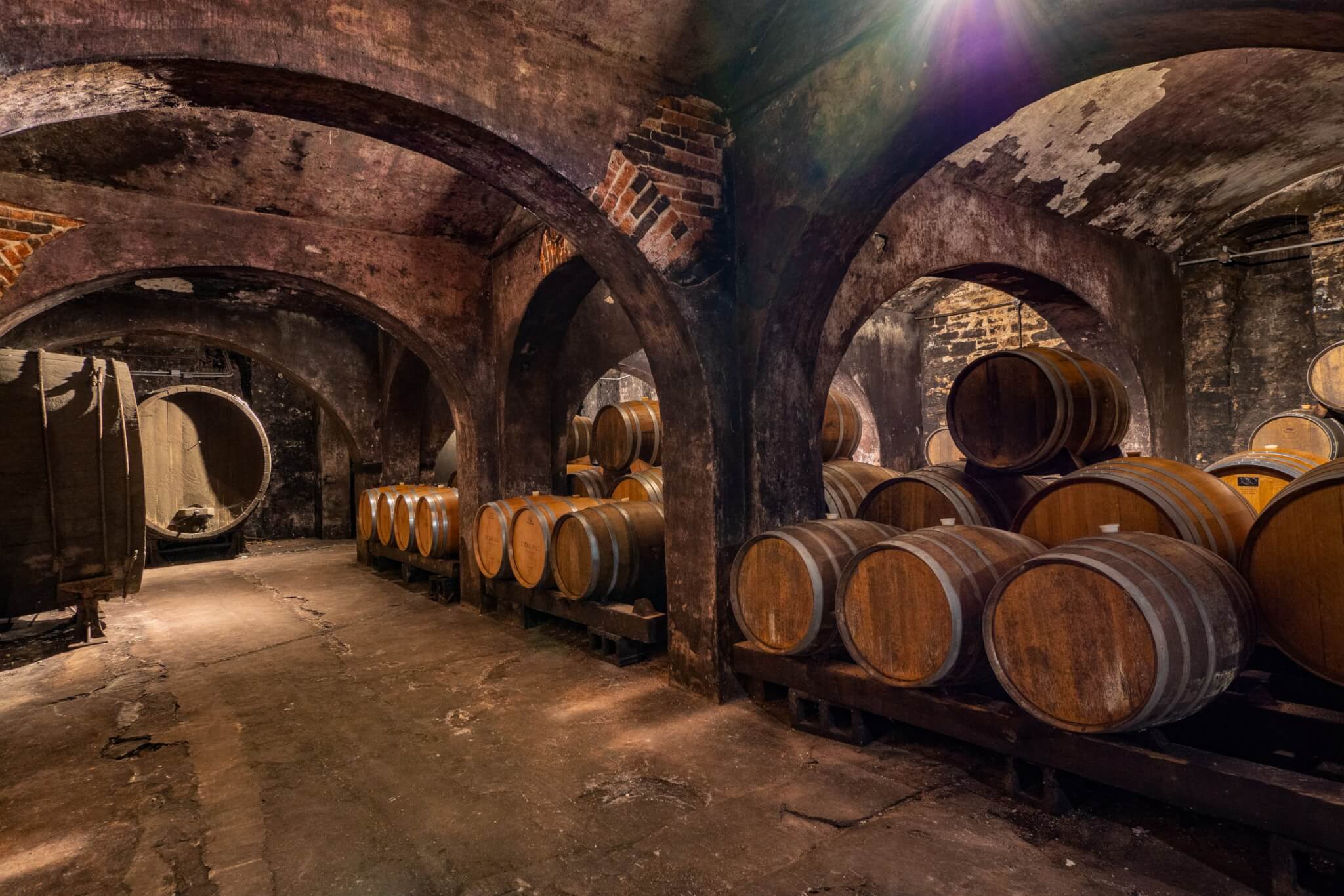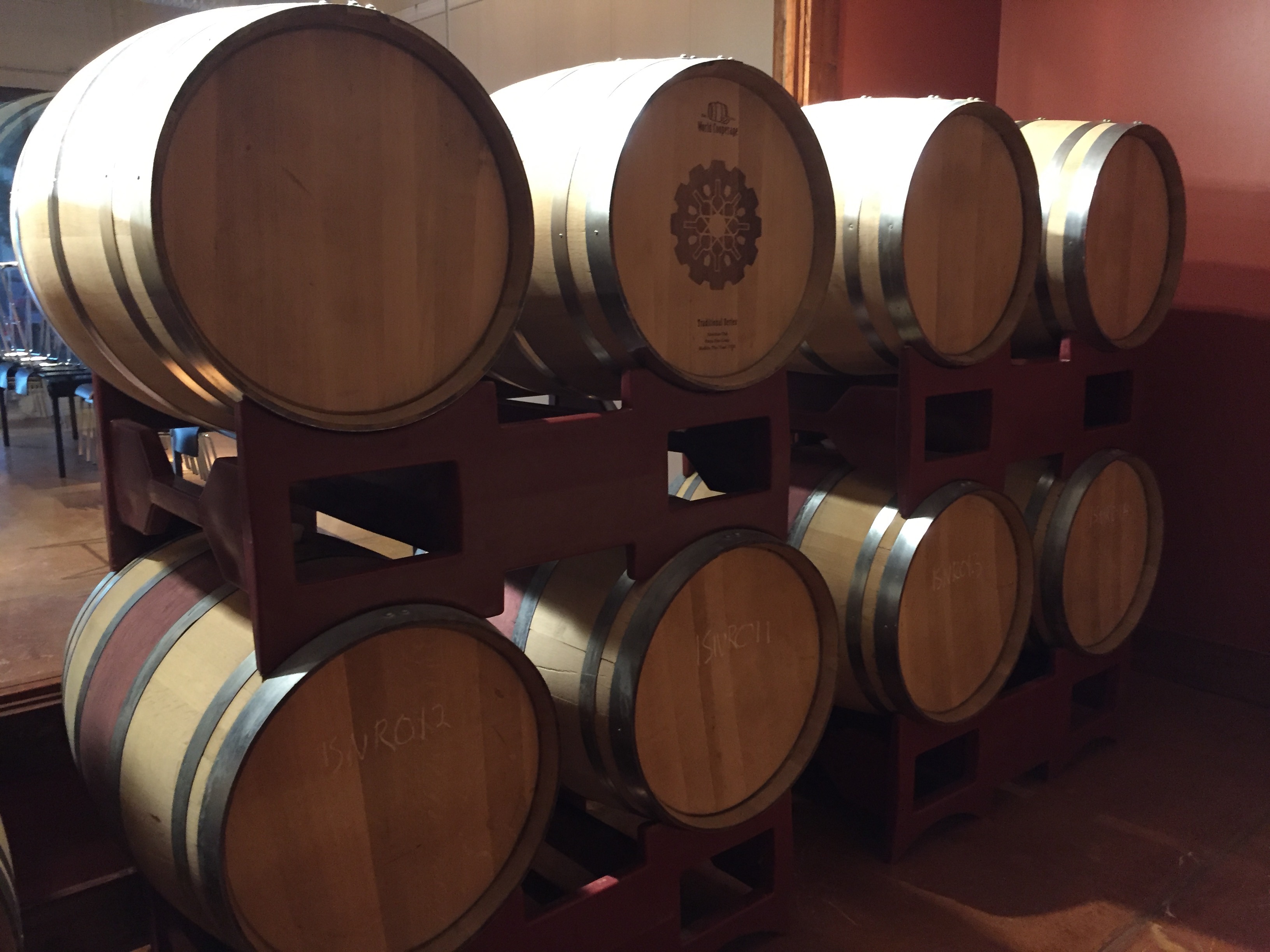The world of wine is diverse and fascinating, with each bottle telling a unique story of craftsmanship and flavor. Among the many factors that contribute to the complexity of wine, the type of oak used during the aging process plays a significant role. In winemaking, the choice of oak can greatly influence the taste, aroma and complexity of the final product.

Many Missouri winemakers use different oak varieties in the wine-making process. From American Oak, Missouri Oak and even French Oak, these different options play an important role in making quality Missouri wines.
American oak barrels are a popular choice among winemakers in Missouri due to their ability to infuse wines with distinctive flavors such as dill, dark chocolate and dill. When these barrels are used in the winemaking process, they impart a unique richness and complexity to red wines like Chambourcin and Norton. The dark chocolate notes add a sweet and dessert-like element (Da Camara, 2020). Additionally, the hint of dill provides a subtle yet intriguing herbal undertone, elevating the overall flavor profile of the wine. As a result, the use of American oak barrels plays a crucial role in enhancing the sensory experience and quality of these beloved Missouri wines.
Winemakers in Missouri often use local oak barrels to age their wines, as the wood imparts unique characteristics to the wine, such as vanilla, spice, and caramel notes. The porous nature of Missouri oak allows for gradual oxygenation, which helps in the development of complex flavors and aromas in the wine. This tr aditional method of aging in Missouri oak barrels has been embraced by many winemakers in the region, contributing to the distinctive taste profile of Missouri wines.
aditional method of aging in Missouri oak barrels has been embraced by many winemakers in the region, contributing to the distinctive taste profile of Missouri wines.
Missouri is home to many cooperages including the world’s largest cooperage – the Independent Stave Company. The company is headquartered in Lebanon, Missouri. Originally focusing on stave milling, TW Boswell, the founder of ISC, opened this cooperage in 1950. Over the years, the Independent Stave Company has expanded to six continents – North America, Europe, Asia, South America, Australia and Africa (Who We Are | Independent Stave Company, n.d.).
French oak is renowned for its sophisticated and subtle impact on wine, offering a delicate infusion of vanilla, cinnamon, and a velvety texture. This distinctive wood imparts a touch of elegance and complexity to the Chardonel wine produced in Missouri. The flavors and aromas derived from French oak contribute to the overall character and quality of the wine, enhancing its richness and depth. The use of French oak barrels in the winemaking process is a key factor in creating a refined and well-balanced Chardonel that is sought after by wine enthusiasts (Da Camara, 2020).

Winemakers in the Show-Me state and across the global wine industry carefully select oak barrels to complement the grape varietal and desired wine style, with considerations for toasting levels and barrel age. The art of oak aging is a delicate balance, where the interaction between wine and oak creates a harmonious blend of flavors that captivate the senses.
As we raise our glasses to Missouri wine, let us savor the intricate flavors that oak brings to each bottle. Whether unoaked or oaked, the role of oak in Missouri wine is a testament to the artistry and passion of winemakers who craft these liquid masterpieces. Each sip of Missouri wine tells a story of terroir, tradition, and the enduring influence of oak. Cheers to the magic of wine and the oak that shapes its soul.
Sources:
Da Camara, M. (2020, June 12). The difference between American and French oak — Grand Cata. Grand Cata. https://www.grandcata.com/blog/difference-between-american-and-french-oak
Who We Are | Independent Stave Company. (n.d.). https://www.independentstavecompany.com/who-we-are/